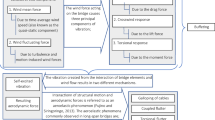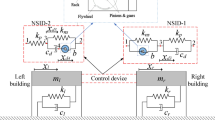Abstract
Computational issues of the seismic simulation of nuclear power plants are discussed in this chapter. The safety requirement of nuclear power plant is high enough to conduct real experiments to evaluate the structural integrity of mechanical components. However, such experiments are performed on independent sets of components because the ability of experimental facilities is limited. Hence, we are constructing a vibration table in an extended world for simulation. In our vibration table, the balancing domain decomposition method is adopted to reduce the computation cost of large mechanical components. Because the computation cost of balancing domain decomposition method depends much on the number of subdomains, a prediction methodology of optimal number of subdomains is introduced. Numerical validation is performed with a component of an actual nuclear power plant.
Access this chapter
Tax calculation will be finalised at checkout
Purchases are for personal use only
Preview
Unable to display preview. Download preview PDF.
Similar content being viewed by others
References
NSC, MEXT and NISA: Nuclear Safety Research Forum 2008—Nuclear Safety Research and Seismic Safety on Nuclear Facilities (2008)
Ministry of Economy, Trade and Industry of Japan: United States—Japan Joint Nuclear Energy Action Plan (2007)
Nakajima, N., et al.: A large scale simulation for impact and blast loading issues. In: Proceedings of International Symposium on Structures under Earthquake, Impact, and Blast Loading 2008, pp. 125–128 (2008)
Nishida, A., et al.: Numerical simulation system “three-dimensional virtual plant vibration simulator” for nuclear plants by using assembled structural analysis. Trans. At. Energy Soc. Jpn. 6, 376–382 (2007)
Tian, R., Yagawa, G.: Non-matching mesh gluing by meshless interpolation-an alternative to Lagrange multipliers. Int. J. Numer. Methods Eng. 71, 473–503 (2007)
Toselli, A., Widlund, O.: Domain Decomposition Methods: Algorithms and Theory. Springer, Berlin (2004)
Mandel, J.: Balancing domain decomposition. Commun. Numer. Methods Eng. 9, 233–241 (1993)
Yagawa, G., Shioya, R.: Parallel finite elements on a massively parallel computer with domain decomposition. Comput. Syst. Eng. 4, 495–503 (1994)
Miyamura, T., et al.: Elastic-plastic analysis of nuclear structures with millions of DOF using the hierarchical domain decomposition method. Nucl. Eng. Des. 212, 335–355 (2002)
Roeck, Y., Tallec, P.: Analysis and test of a local domain decomposition preconditioner. In: Fourth International Symposium on Domain Decomposition Methods for Partial Differential Equations, pp. 112–128 (1991)
Trottenberg, U., Oosterlee, C., Schuller, A.: Multigrid. Academic Press, San Diego (2000)
Shiozawa, S., et al.: Overview of HTTR design features. Nucl. Eng. Des. 233, 11–22 (2004)
IAEA: Preliminary Findings and Lessons Learned from the 16 July 2007 Earthquake at Kashiwazaki-Kariwa NPP. IAEA report (2007)
Choi, H., Kim, J.: Energy-based seismic design of buckling-restrained braced frames using hysteretic energy spectrum. Eng. Struct. 28, 304–311 (2006)
Appelo, D., Petersson, N.A.: A stable finite difference method for the elastic wave equation on complex geometries with free surfaces. Commun. Comput. Phys. 5, 84–107 (2008)
Ogino, M., Shioya, R., Kanayama, H.: An inexact balancing preconditioner for large-scale structural. J. Comput. Sci. Technol. 2, 150–161 (2008)
Yoshimura, S., et al.: Advanced general-purpose computational mechanics system for large-scale analysis and design. J. Comput. Appl. Math. 49, 279–296 (2000)
ADVENTURE Project: url http://adventure.sys.t.u-tokyo.ac.jp
Author information
Authors and Affiliations
Corresponding author
Editor information
Editors and Affiliations
Rights and permissions
Copyright information
© 2010 Springer-Verlag Berlin Heidelberg
About this paper
Cite this paper
Yamada, T., Araya, F. (2010). Construction of Vibration Table in an Extended World for Safety Assessment of Nuclear Power Plants. In: Resch, M., Roller, S., Benkert, K., Galle, M., Bez, W., Kobayashi, H. (eds) High Performance Computing on Vector Systems 2009. Springer, Berlin, Heidelberg. https://doi.org/10.1007/978-3-642-03913-3_17
Download citation
DOI: https://doi.org/10.1007/978-3-642-03913-3_17
Published:
Publisher Name: Springer, Berlin, Heidelberg
Print ISBN: 978-3-642-03912-6
Online ISBN: 978-3-642-03913-3
eBook Packages: Mathematics and StatisticsMathematics and Statistics (R0)




